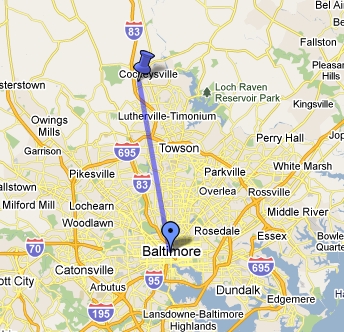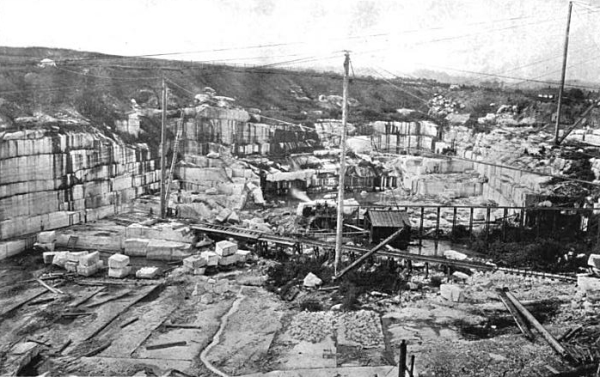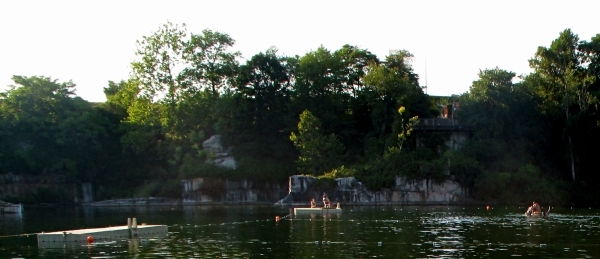What is a building stone? Well, any type of dense, massive rock suitable for use in construction can be defined as a building stone.
This Earthcache is one in a series of Earthcaches about Building Stones native to Maryland. Each one highlights a specific type of building stone, its origin, and an example of its use. Most of the quarry locations are closed or on private land nowadays, but you can still enjoy the unique properties of each by visiting a building, monument, or bridge constructed using them. I've done extensive research to identify with reasonable certainty the specific quarry or area that supplied the material for each of the places you will visit in this series.
Maryland has several distinct physio-graphic regions. Physio-graphic regions are broad-scale areas based on terrain texture, rock type, and geologic structure and history. In the US, they are generally broken down into three tiers: Divisions, Provinces, and Regions. Cockeysville Marble comes from the area known as the Upland Section of the Piedmont Plateau Province.

You are standing in front of a building that is faced mainly with Cockeysville Marble. The quarry for this stone was located near present day Cockeysville, about 13 miles north of here. Cockeysville Marble is a metamorphic rock, meaning it was transformed by heat and pressure from one type of rock into another. In this case, limestone to marble. It is of Precambrian age, about 600 million years old. The term meta-limestone also describes this marble, meaning that it was a limestone changed by metamorphism. It is found in several long narrow bands to the north and west of the city.
The main minerals in this marble are calcite (CaCO3, just as in limestone) and dolomite [CaMg(CO3)2]. Crystal size ranges from fine grained to coarse and sugary. Strength testing has shown that Cockeysville Marble is more durable than almost any other Marble with a crush strength of nearly 25,000 psi. That's almost double even high strength concrete!
Cockeysville marble is mainly white although some layers can be gray or pink. Where the building stone surfaces are kept cleaned and polished the marble generally remains white; where dust accumulates or impurities in the stone weather, the marble may become a dove-colored gray. It is part of the identity of the city of Baltimore as many of the stone steps in front of the city's rowhouses are made from it, and are kept gleaming white by proud homeowners. You can see some examples by walking a few steps east from here on Mt. Vernon Place.
If you look to the northwest you will see the Washington Monument. It is also made from Cockeysville Marble but is is noticeably different. More on that in the logging questions.
|

Stone Source Location
|
The Building
This building houses the renowned Peabody Institute which was founded in 1857 by George Peabody, considered to be the first modern philanthropist. The Grecian-Italian bulding was designed by Edmund Lind and construction began in 1866 on this first major intellectual and arts center in an American city. The Institute is now a part of the John Hopkins University, and is the oldest continuously active music conservatory in the United States. The building also houses the George Peabody Library, and the Arthur Friedham Music Library. The Peabody Library is arguably one of the most beautiful in the nation and I encourage you to enter for a look. Go in the main doors and hang a left. Talk to the guard if the doors are closed.
|

The Peabody Institute c. 1902
|

The Peabody Institute Today
|
The Quarry
The Beaver Dam Quarry near Cockeysville Maryland began producing stone about 1815. Today, the flooded quarry is the home of the Beaver Dam Swim Club. The stone from this quarry is considered to be of the very highest quality and has been used in several notable buildings including the columns for the National Capital Building, the spires for St. Patrick's Cathederal in New York City, and the Washington Monuments in Washington DC (the top section built from 1878 onward) and Baltimore.
|

Beaver Dam Quarry in production
|

Beaver Dam Quarry (Swim Club) Today
|
To log this Earthcache:
Email me with the answers to the following questions. They can be found using the information above and by inspection of the building.
-
Rub your hand over the marble facing. Is it smooth or rough?
-
Look closely. Is the color uniform, or are there other colors in the stone?
-
Look at the round columns at the main entrance. Are the main sections a single tall piece of marble, or are they made up of sections? Why do you think they were built that way?
-
What size are the individual grains of the stone?
-
Head northeast over to the Washington Monument which is also made of Cockeysville Marble. Look at the blocks used in the lower square section. Is this a better quality stone than was used in the Peabody Building? Describe the difference in grain size and uniformity of color between this stone and the stone in the Peabody Building.
-
Optional: Post a photo in your log of you in the park just north of the building with your GPS if possible, and the Washington Monument in the background.
Logs containing spoiler pictures will be deleted without warning.
You may post your log at any time, but emailed answers must follow within 7 days or your log will be deleted.
Be sure and visit the other EarthCaches in this series:
 Almshouse Amphibole Schist
Almshouse Amphibole Schist
 Seneca Red Sandstone
Seneca Red Sandstone
 Woodstock Granite
Woodstock Granite
References:
Maryland, its resources, industries and institutions. Board of World's Fair Managers, Baltimore, 1893
Building stones and clay-products: a handbook for architects. Ries, New York, 1912
Maryland Geological Survey, Volume 2, Baltimore, 1898
Maryland Geological Survey (on-line)
Beaver Dam History. Beaver Dam Swim Club, Baltimore, 2009
Some images from Google Maps and Wikimedia Commons